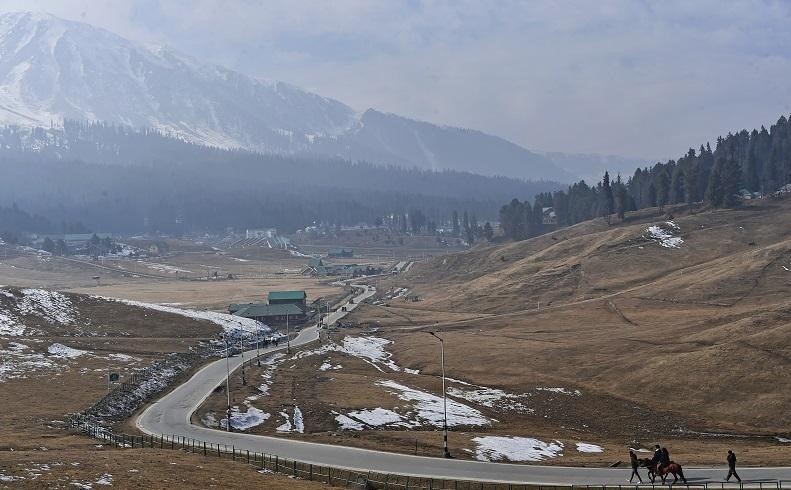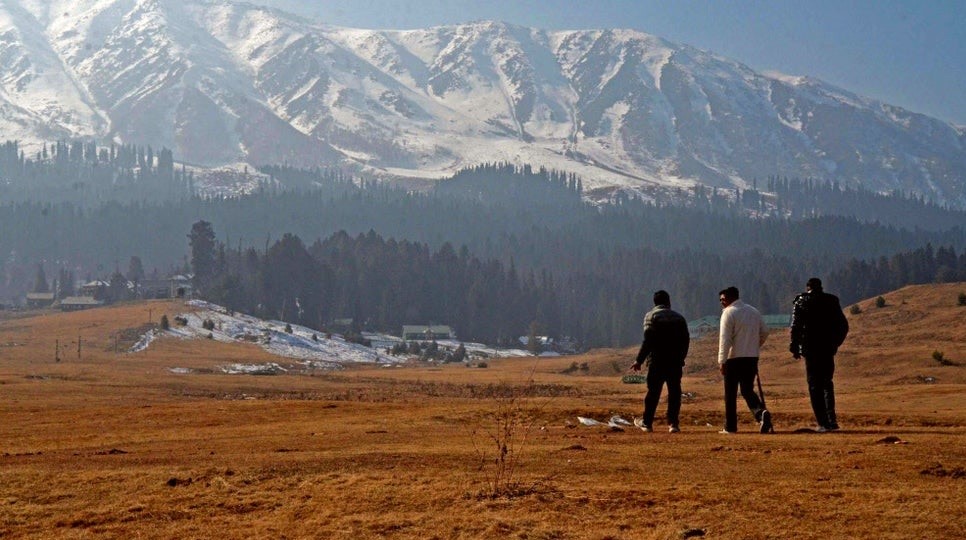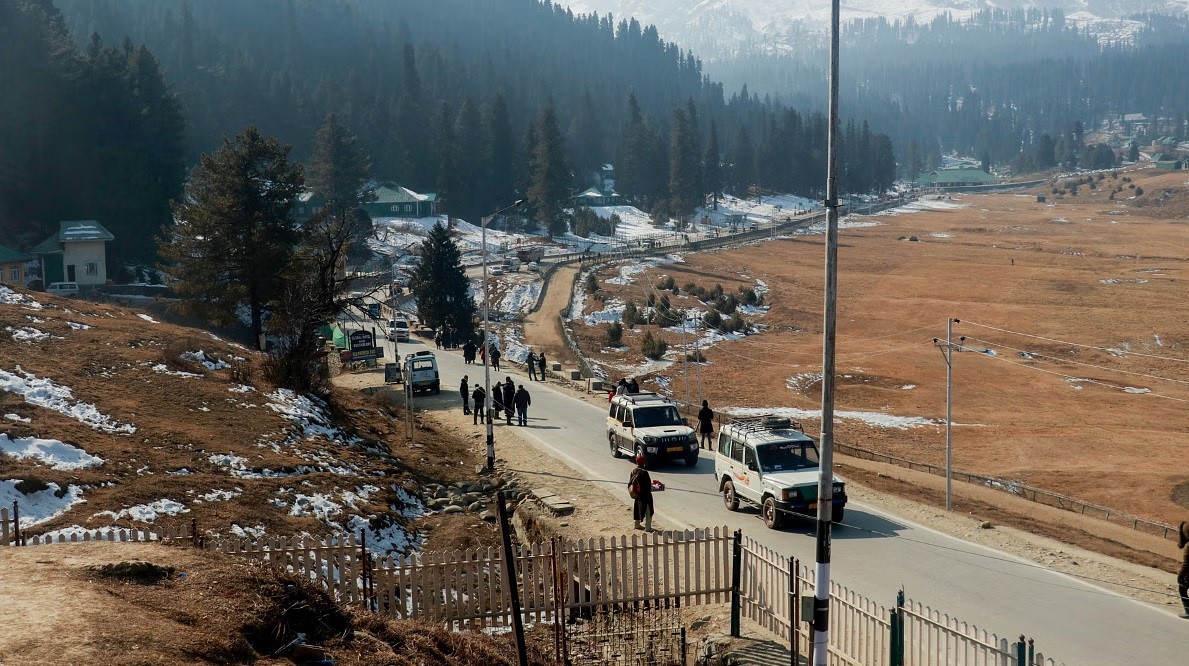What the ramifications are of Kashmir and Ladakh not having snow this winter. Although there has been a downward trend of snowfall in the Ladakh-Jammu and Kashmir region in recent years, this season is exceptional. These are the contributing factors.
This winter, Gulmarg, one of Kashmir’s top tourist destinations, has seen very little snowfall, which has negatively impacted the flow of visitors and the revenue of ski resorts. 95,989 tourists, including 547 foreign visitors, visited Gulmarg in January of last year, according to government data. Although data for the first half of this month is not yet available, officials claimed that the number of visitors appeared to be at least 60% fewer.
But Kashmir’s snowfall offers far more benefits than just visual appeal for visitors. It is essential for the local economy, the supply of water in streams and rivers, winter crops and horticulture, and the local climate.
The whole of Jammu and Kashmir as well as Ladakh have mostly avoided rain or snow this winter, despite the fact that the absence of snow is most noticeable in Gulmarg, a popular tourist destination at this time of year.
In Jammu & Kashmir and Ladakh, winter precipitation primarily takes the form of snowfall. The first snowfall often occurs in the first part of December and lasts through most of January in this area. However, this season has been generally dry. According to data from the India Meteorological Department (IMD), Jammu and Kashmir experienced an 80% rainfall shortfall in December and a 100% (none at all) deficiency in January thus far. There has been absolutely no precipitation in Ladakh in December or January.
Although the amount of snowfall in the area has been decreasing recently, this season is exceptional.
The overall downward trend of snowfall has been linked to a decrease in disturbance events in the west and a slow increase in temperature, both of which are influenced by climate change. According to scientists, this year’s extra element may be the ongoing El Nino phenomenon in the eastern Pacific Ocean.
Unrest in the West
Western disturbances are the primary driver of winter precipitation in the Himalayan region. These are significant rain-bearing wind systems that move eastward and originate outside of Afghanistan and Iran. They bring moisture from the Atlantic and Mediterranean seas with them.
During the post-monsoon and winter months, rainfall in north and northwest India primarily originates from Western Disturbances. Western Disturbances are the third main contributor to India’s yearly rainfall, after the south-west monsoon season, which lasts from June to September, and the north-east monsoon, which delivers rain to Tamil Nadu and certain other places.
During winter months, there are often four to six western disturbance occurrences every month. There was a weak western disturbance event this season in December that produced no rain, and another one of a similar nature in January.


“Western disturbances have been showing a declining trend in recent times. In some years we have seen just two or three events a month, when normally five or six are expected. Because of this, the overall precipitation during the winter months in the northern regions has also been declining,” A P Dimri, an atmospheric scientist who is currently the director of Mumbai-based Indian Institute of Geomagnetism, said.
This decreasing trend has been documented in a number of recent investigations, including those by Dimri. According to one of them, there has been a 43% decrease in the mean frequency of strong and extreme Western Disturbances—that is, disturbances that unquestionably cause rain or snowfall—in recent years.
The other related issue is that these places’ temperatures are rising. It is observed that the upper elevation regions are seeing a faster rate of temperature increase than the plains. Take a peek at the wintertime temperatures in Kashmir. The temperatures in Srinagar are often the same as those in Delhi, and occasionally they seem even higher, according to Dimri. He went on, “This is also a factor in the decrease in snowfall.”
In fact, there have been a few years in the past ten years—2022, 2018, and 2015—when Jammu & Kashmir’s winters have been comparatively dry and have had very little snowfall. The head of IMD’s Srinagar center, Mukhtar Ahmad, stated that El Nino could make things worse this winter.
El Niño has been consistent over the last three months and is expected to do so throughout the upcoming months. The worldwide atmospheric circulation has been impacted, and this may also be a factor in the region’s precipitation shortage, according to Ahmad, who clarified that El Nino by itself was not the cause.
He noted that several years have witnessed relatively little snowfall, even in the absence of El Nino. Ahmad stated that the following years had been dry recently: 2022 (December), 2018 (December–January), 2015 (January), 2014 (December), 1998 (December–January), and 1992 (December).
Dimri concurred that there may be a clear correlation between climate change and Kashmir’s decreasing snowfall. Yes, in fact. Indeed, I believe that climate change is a factor in this. Numerous findings from our research suggest that,” he stated.
It is anticipated that less snowfall in the area will have both immediate and long-term effects. Less hydroelectricity will be produced in the long run, glacier melting will accelerate, and the drinking water supply will suffer since there will be minimal groundwater recharge due to sparse snowfall.
Short-term effects of a dry spell can include a rise in agricultural drought, a decrease in crop production, and an increase in forest fires. “It may result in an early spring, which may lead to early flowering and a decrease in yield,” Ahmad stated.
For winter crops, especially horticulture, the winter snow provides a consistent supply of moisture to the soil. Absence of snowfall has a negative impact on the yields of vital elements for the local economy, such as saffron or apples.




